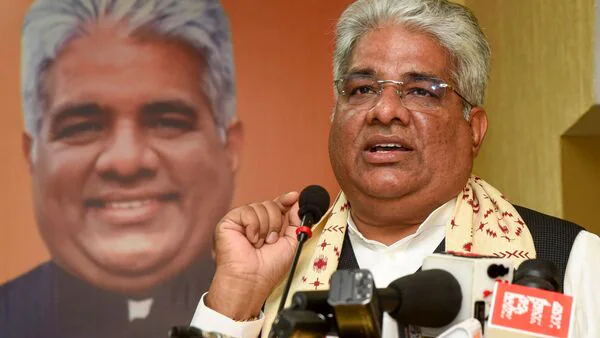Recent Change In Rules Likely To Boost Critical Mineral Mining, Says Minister
Speaking at an event in New Delhi, Yadav said that on 31 August, the ministry amended the Forest (Conservation and Augmentation) Rules, 2023 to facilitate the objectives of achieving self-reliance in the critical mineral sector under the newly-launched National Critical Mineral Mission, 2025.
Also Read | Quad counter-punch: Allies unite to break China's critical minerals gripUnder this mission, 24 minerals have been identified as critical and strategic, and 29 others have been recognized as important for strengthening the country's economy and national security. "The amended rules simplify the approval process for mining these minerals in forest areas for both public and private entities," the minister said.
Crucial notificationThe decision is part of a series of crucial notifications issued by the ministry in the past few days to boost sustainability, the minister added.
Amid the growing requirement of critical minerals across sectors, and volatile supply chains, India has been trying to increase domestic mining of these minerals along with acquiring assets in mineral-rich countries. In 2023, the Centre came up with a list of minerals that are critical to the Indian economy, including lithium, antimony, beryllium, bismuth, cobalt, copper, gallium, and cadmium.
Also Read | China is choking supply of critical minerals to Western defence companiesThe government also recently amended the Mines and Minerals (Development and Regulation) Act, 1957 to boost the ease of doing business and encourage private sector participation. In January, the Union cabinet approved the much-anticipated 'National Critical Mineral Mission' to build a resilient value chain for critical mineral with an outlay of ₹34,300 crore over seven years. These minerals are used in several strategic sectors including defence, green energy, telecommunications, information technology, pharmaceutical, and medical appliances.
Revised methodologyYadav also informed that the ministry has notified the revised methodology for the green credit programme on 29 August to encourage voluntary environmental action. The programme has now been strengthened with provisions that allow direct participation by private entities, establish minimum restoration commitments, mobilize private capital for climate action, and utilize earned green credits. The revised methodology ensures that the green credit programme becomes a catalyst for meaningful eco-restoration, the minister added.
Also Read | With no new US tariffs on critical minerals, the race for them will only heat upAs the Centre plans to launch India's own carbon market by next 2026, India is also collaborating with other major economies on this front to achieve its ambitious net zero goals. India aims to achieve net zero carbon emission by 2070. Last week, during prime minister Narendra Modi's visit to Japan, both the countries agreed to set up a joint credit mechanism for carbon markets to achieve energy transition and respective net zero goals.
Legal Disclaimer:
MENAFN provides the
information “as is” without warranty of any kind. We do not accept
any responsibility or liability for the accuracy, content, images,
videos, licenses, completeness, legality, or reliability of the information
contained in this article. If you have any complaints or copyright
issues related to this article, kindly contact the provider above.
Most popular stories
Market Research

- United States Lubricants Market Growth Opportunities & Share Dynamics 20252033
- UK Digital Health Market To Reach USD 37.6 Billion By 2033
- Immigration Consultancy Business Plan 2025: What You Need To Get Started
- United States Animal Health Market Size, Industry Trends, Share, Growth And Report 2025-2033
- Latin America Mobile Payment Market To Hit USD 1,688.0 Billion By 2033
- United States Jewelry Market Forecast On Growth & Demand Drivers 20252033






















Comments
No comment